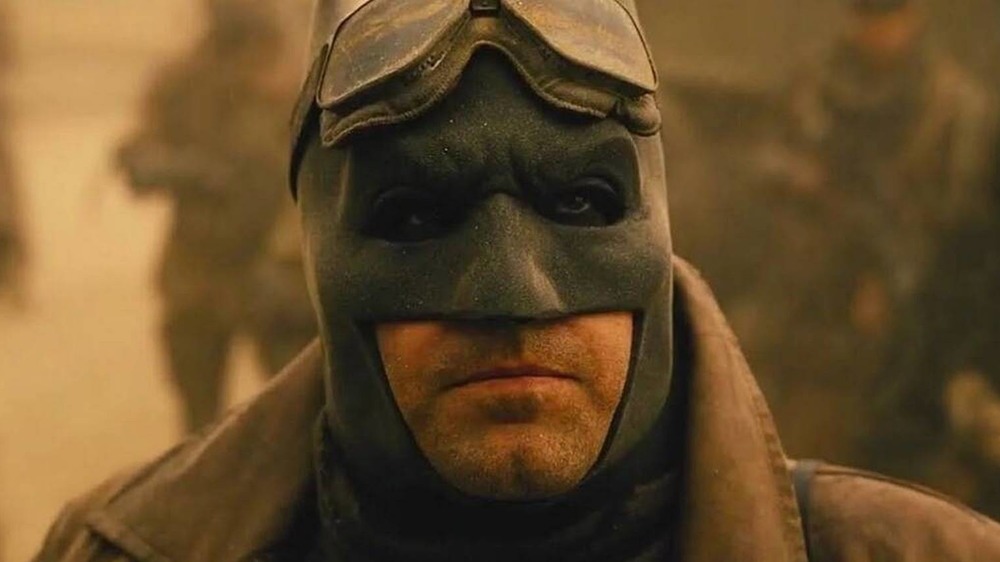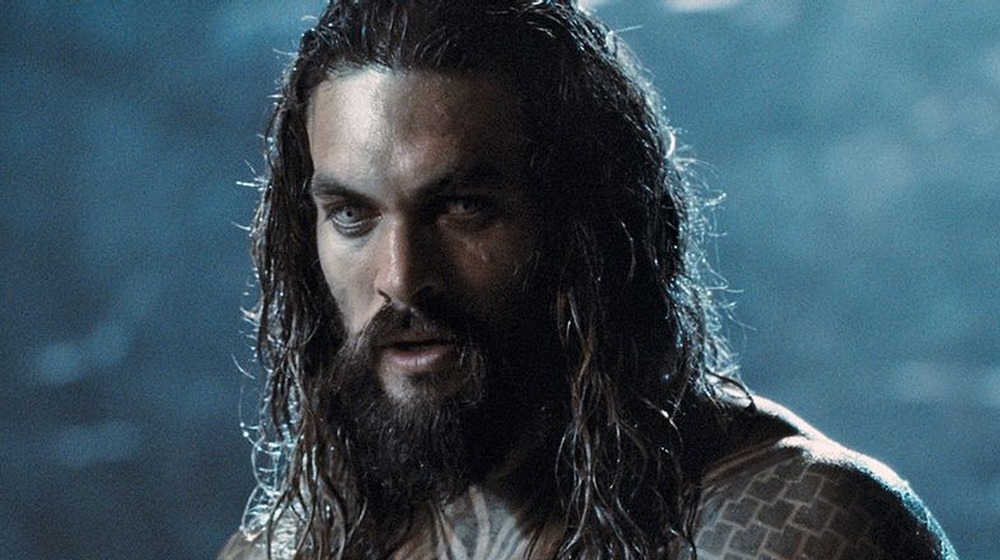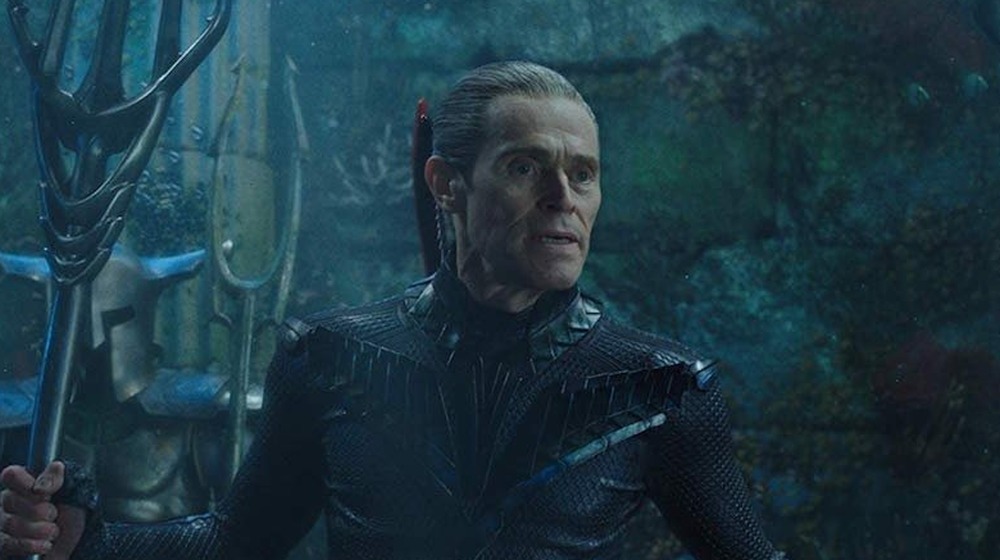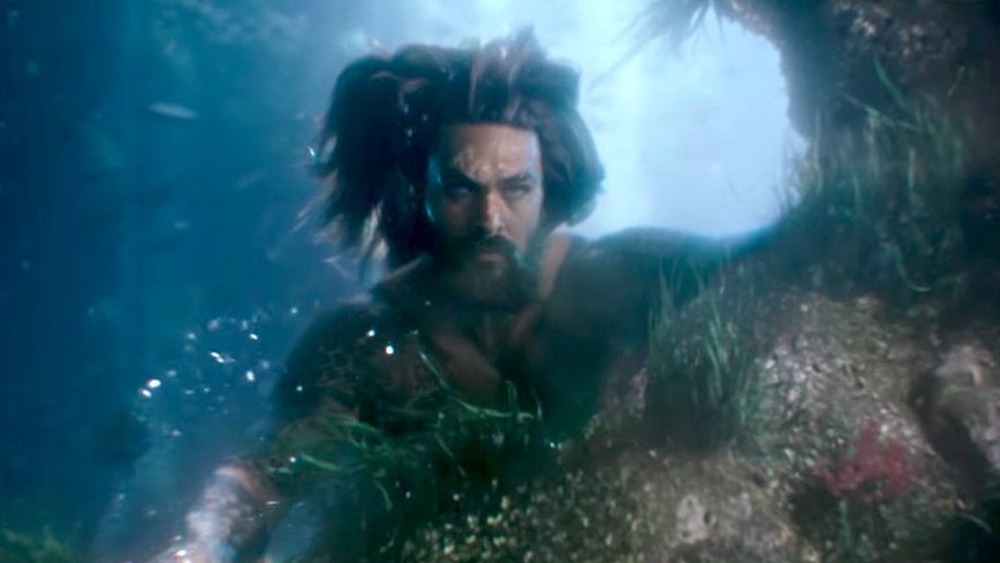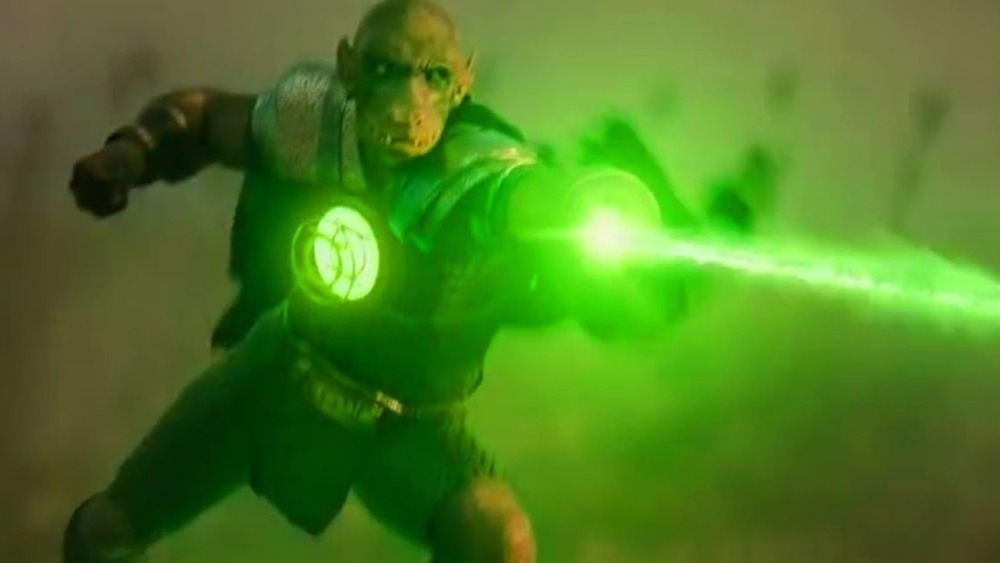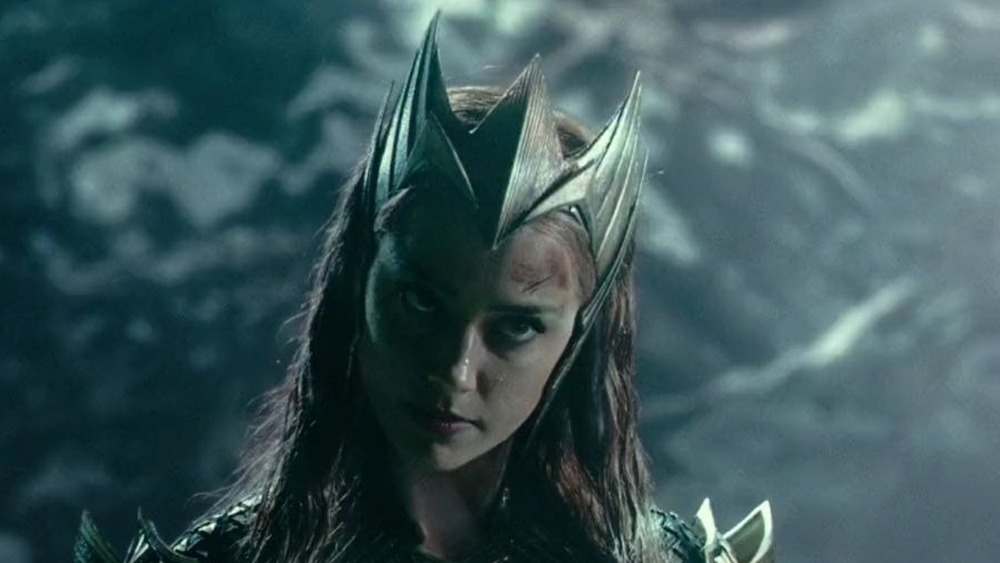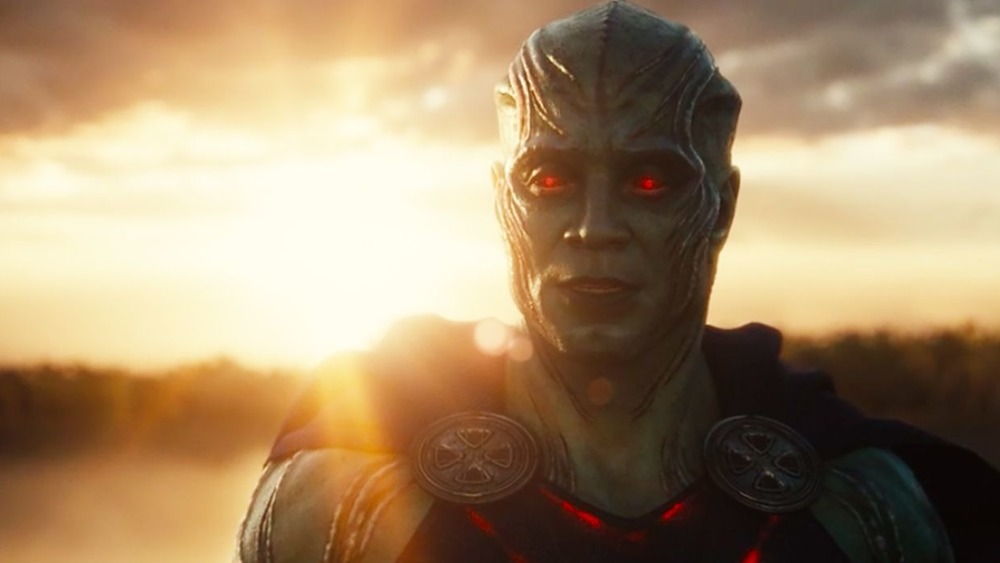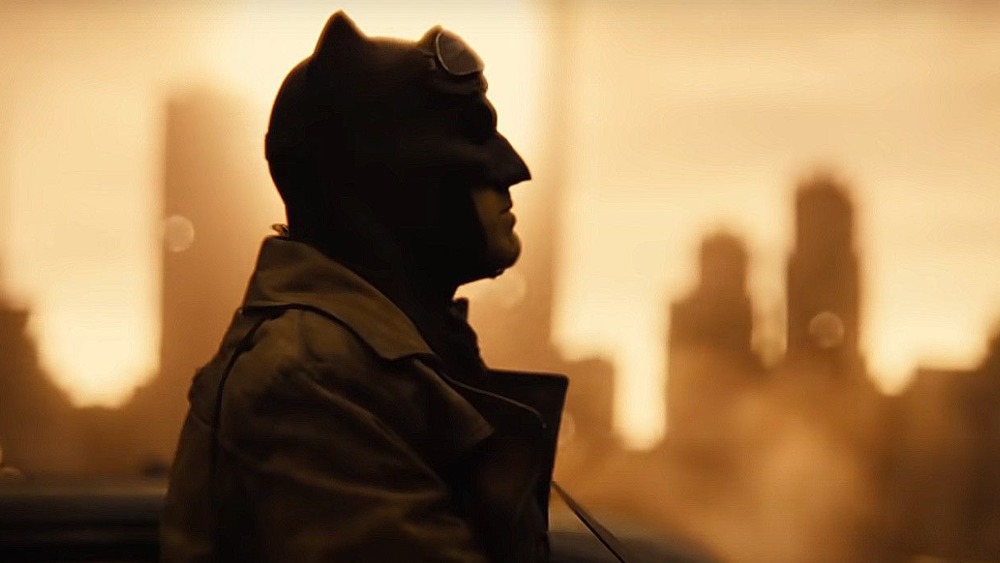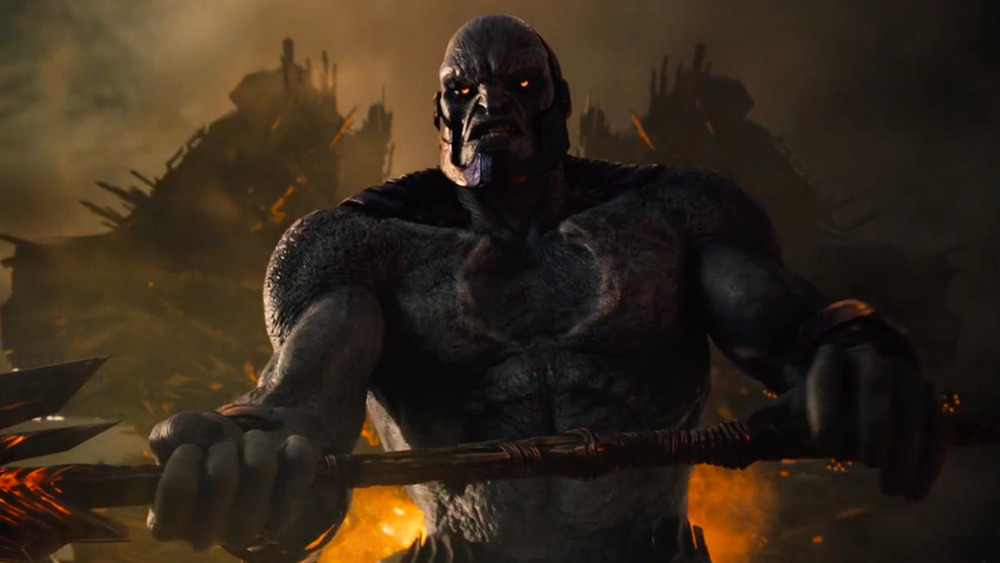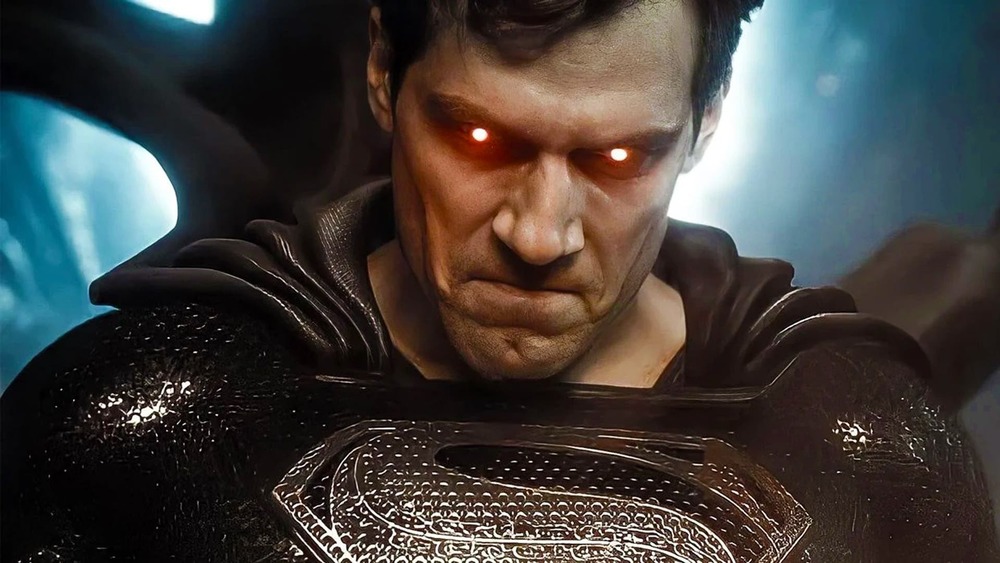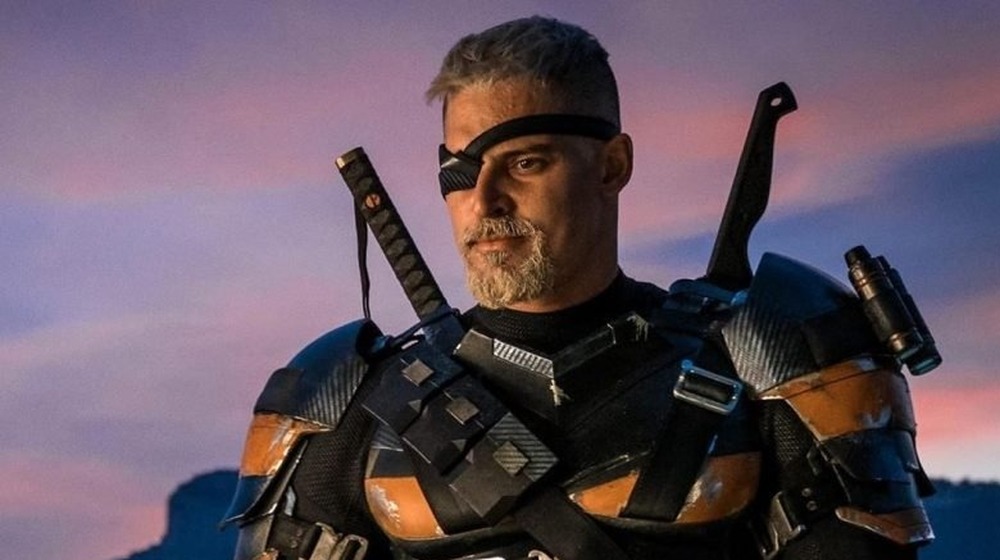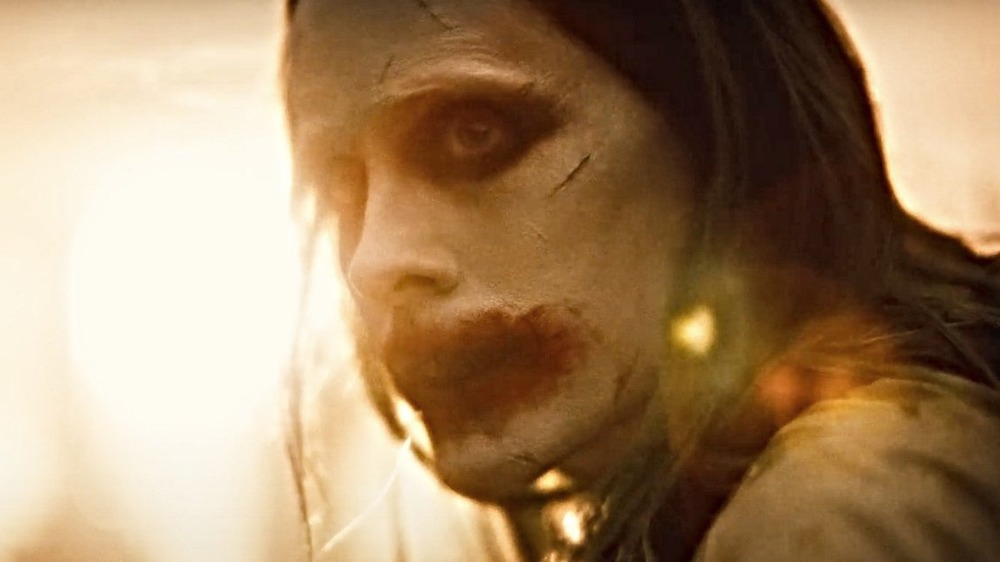Confusing Moments In Zack Snyder's Justice League Explained
If you click a link and buy a product or service from a merchant, we may be paid an affiliate commission.
It never felt like the day would come, but the already legendary Snyder Cut is finally out in the world on Max (formerly HBO Max). Zack Snyder's Justice League has been largely well received by fans and critics alike. With multiple hours of previously unseen footage and new scenes, loads of great new CGI, and a story that actually makes sense, it is clear to see why this project was meant to see the light of day. However, it is not without its share of contradictions and unexplained moments.
Zack Snyder's Justice League is an ambitious four-hour epic jam-packed with continuity errors, symbolic imagery, and references back to comics that are sure to leave many viewers perplexed — especially if they've seen 2017's Justice League. Let's take a look at some of the more confusing moments in Zack Snyder's Justice League and break down just how they fit into the larger picture that is the Snyderverse.
Why are Aquaman's eyes always changing color?
Of all the minor continuity discrepancies between the DCEU movies, one of the most noticeable is the case of Aquaman's eye color. If you missed out on (or skipped) the Whedon cut of Justice League back in 2017, then you are used to the brown yellows closer to Jason Momoa's natural eye color in James Wan's Aquaman. In the 2017 Justice League, Aquaman can be seen with striking baby blues. This coloring was brought back again (or more likely never changed) in the Snyder Cut, leaving some viewers reasonably confused.
As it turns out, this is a choice both directors are very aware of and cite as an artistic difference. But according to Momoa it was a decision motivated by something the actor himself said. In an interview with the Huffington Post promoting Aquaman back in 2018, Momoa revealed about the change, "It was my idea I brought to Zack. I thought it would be rad to have a different eye color. Something that's completely Atlantean that was, like, his mark...I felt like it was just something that would be a little otherworldly, so Zack really liked it."
As for why director James Wan went in a different direction, Momoa said, "I feel like [Wan] wanted to have a warmer thing in this [movie]. I feel like my justification for [the change] is that he kind of went home. He's more rooted, and he's calm when he's around his family."
What's the deal with Aquaman's tridents?
Another inconsistency between Aquaman, Batman v Superman: Dawn of Justice and Zack Snyder's Justice League has no real bearing on their overall plots, but is a detail that can be irksome to anyone following the DCEU releases thus far. It's time to talk about the trident.
In Zack Snyder's Justice League, Queen Atlanna's trident is given to Aquaman by Nuidius Vulko (Willem Dafoe). Vulko encourages Aquaman to take the trident and claim his birthright to the throne of Atlantis. He declines, setting up the 2018 Aquaman arc. In the theatrical version of the film, this was replaced by a scene between Mera and Aquaman after Steppenwolf steals the Mother Box hidden in Atlantis. Mera gives Aquaman the quindent that he uses to fight in the rest of the film. The scene is absent in the Snyder Cut, meaning there is no real explanation as to how he gets the quindent.
According to footage first shown in Snyder's previous movie, Batman v Superman, this is either a plot hole or one of the most confusing moments of the movie. The footage in BvS shows Aquaman with a quindent that looks pretty much exactly like the weapon he wields in Justice League. There is no way he would've had this, because Mera didn't give it to him until the events of the next movie. So this is most likely either an identical weapon or simply an outright mistake.
Talking underwater works differently than in Aquaman
This is another perplexing moment that is a result of creative changes made following the lackluster theatrical release of Justice League. The way Snyder envisioned underwater communications between Atlanteans works just fine for his movie, but James Wan made some changes to fit his vision for Aquaman.
In both versions of Justice League, all underwater conversations between Atlanteans happen in air bubbles they create. The first time we see this in Zack Snyder's Justice League is the new addition of the previously excised Willem Dafoe scene where he attempts to give Aquaman his mother's trident. In James Wan's Aquaman, the Atlanteans no longer require these bubbles to speak to each other underwater.
"People are overthinking it," Wan said in an Entertainment Weekly interview. "They're just gonna talk!" Honestly, it's hard to imagine him having any other stance. Snyder's stylish portrayal of Atlantean communication would have quickly become annoying in a movie that takes place primarily in Atlantis.
The Green Lantern scenes are more important than they seem
To many who grew up with the Justice League comics and cartoons, Green Lantern is a core member of the league. Sadly, the colossal bomb that was 2011's Green Lantern movie with Ryan Reynolds ensured that DC won't be touching Hal Jordan for a good while. But it seems like Snyder has put the wheels in motion to one day bring Green Lantern back into the fold.
The climax of the second part of Zack Snyder's Justice League is a flashback of epic proportions. It depicts the first age of heroes and the final battle between Darkseid and the humans, Atlanteans, and Amazons. The one Lantern visible, Yalan Gur, was in the original cut, but in the Snyder Cut he dies by Darkseid's hand. The scene also highlights how the ring escaped and continued the hero's line.
Yalan Gur wasn't the only Lantern that made an appearance in the Snyder Cut. Kilowog, set up to be one of the main characters in HBO Max's Green Lantern Corps series, appears dead in Cyborg's vision of the desolate future timeline — a.k.a. the "Knightmare." This is the most hidden of the many clues about which heroes and villains could die in the future of Snyder's timeline.
Mera's accent has changed
One of the most surprising and unusual changes made to the Snyder Cut comes from a character who isn't in the movie for a terribly long amount of screen time. Still, it's enough to notice how Snyder has made Mera (Amber Heard) change her accent... or at least it seems that way. The truth is probably much simpler.
In Aquaman and 2017's Justice League, Heard voiced the Atlantean queen with an accent that sounded more or less like her regular speaking voice. Zack Snyder's Justice League has Heard putting on a British accent. It's likely that the original scenes with Mera for the movie were already completely finished, and were simply added back for the Snyder Cut. This means that the Mera scenes in 2017's Justice League are almost certainly reshoots. This choice is minor and in keeping with Snyder's objective to completely preserve his original vision for the film. But it might make things even more confusing if Mera goes back to speaking with an American accent for Aquaman 2.
Why does Martian Manhunter impersonate Martha Kent?
If you are at all confused about the scene with Lois Lane (Amy Adams) and *gasp* a green space alien impersonating Martha Kent, don't worry, so are we. Later revealing himself to Bruce Wayne and to the DC universe at large, Martian Manhunter a.k.a. J'onn J'onzz makes his live action debut in Zack Snyder's Justice League in a mysterious scene.
At the end of a long conversation between Lois and Martha about Clark, Martha exits and, unbeknownst to Lois, shapeshifts first into Martian Manhunter and then into Secretary of Defense Calvin Swanwick. In the scene, Martha advises Lois that she still needs to be part of society, which motivates her to get out, placing her in the right place at the right time when Superman is brought back to life. This moment is pivotal and the knowledge that Martian Manhunter can see the future and was orchestrating events in the movie the whole time is mind-blowing.
Martian Manhunter was one of the original Justice League members and his appearance in the Snyderverse brings the league's new total up to that oh-so-important number seven. Now that we know what Snyder planned for two Justice League sequels, we know he was going to expand the group and bring in Green Lantern and other DC legends. But now the future of Martian Manhunter in the DCEU remains uncertain.
Understanding the Knightmare is key to understanding the Snyder Cut
A very important part of the Snyderverse — and specifically Batman's story arc — is the Knightmare. It's never really explained in either Batman v Superman: Dawn of Justice or Zack Snyder's Justice League, nor is it referred to by name. Still, understanding it is vital to understanding the greater meaning behind many of the new additions to the Snyder Cut.
The Knightmare is introduced in Batman v Superman, when Bruce dreams of being in a sandy, washed-out desert. After being ambushed by a group of men, Batman sees parademons coming in the distance and is overtaken. This vision concludes with the reveal of an evil Superman and Bruce being awoken to a Flash from the future telling him, "Lois is the key." It's a reference to what happens in Justice League, but also is a clue to her importance in the now shuttered sequels Snyder was planning.
The Knightmare itself makes a return in the Snyder Cut, where it becomes clear that Darkseid is the cause of the apocalyptic future Bruce is seeing. It's never explicitly stated, but Snyder has explained that this is a vision of the future that must be stopped. In the Snyder Cut, we see Superman holding the burned body of Lois in the Batcave, showing Bruce the turning point that he must never let happen. Lois is the key.
What is the anti-life equation?
There is a lot to love about Zack Snyder's Justice League, but admittedly it doesn't explain some of its biggest concepts — such as what exactly is the anti-life equation and why does Darkseid want it so badly?
Originally created for DC's Fourth World arc in 1970, the anti-life equation is a secret way of controlling all sentient beings. Darkseid believes part of the equation exists in the subconscious of humanity, which is why he interrogates people using those creepy spider bugs. Thematically, a common interpretation is that the equation is a mathematical proof of the futility of living and a way to dominate humanity through spreading hopelessness. What it actually is, and whether or not it has a physical form, in the Snyderverse is one of the biggest mysteries for the future of the DCEU.
Comic legend and Darkseid creator Jack Kirby explained why he named this formula the way he did. According to the fifth issue of Kirby's Forever People, it is called the Anti-Life Equation because "if someone possesses absolute control over you — you're not really alive."
What's the significance of Superman's black suit?
There are plenty of current DC fans who miss Snyder's references to iconic comics, so you can't blame them for being confused about the significance of Superman coming back to life in a pitch black suit. It's not explained at all in the movie, but that suit has great historical significance that references one of Snyder's key inspirations for his Justice League.
The black suit in Zack Snyder's Justice League is a reference to 1993's The Reign of Superman comic arc; the follow-up to previous year's The Death of Superman. The issue when Clark comes back in Reign sporting that very suit is a DC Comics moment for the ages. Since then, it has always been associated with the death and return of Superman. In the lore, the suit was designed to help the weakened Superman absorb more solar energy so he can be stronger after coming back to life.
While this may be obvious to older DC Comics fans, it's not left unexplained for no reason. There was actually a deleted scene that was shot during Snyder's original production that showed a newly resurrected Superman choosing to don either a suit of Kryptonian armor or the iconic black suit. It goes without saying that he made the right choice.
What's the point of Deathstroke now?
Joe Manganiello (of Flash Thompson fame) joined the DC universe as Deathstroke in a mid-credits scene In the theatrical cut of Justice League back in 2017. The yacht scene that served as his introduction is in the Snyder Cut, but in an altered form. However, the restored version of the scene is more confusing than anything else.
In the theatrical Justice League, Deathstroke's introduction was a teaser for a Legion of Doom movie where Luthor gathers a band of villains to face off against the Justice League. In that version of the scene Lex Luthor (Jesse Eisenberg) asked him, "Shouldn't we have a league of our own?" Warner Bros. Pictures changed direction after that version of the movie was a box office flop. In the version of the scene that made it into the Snyder Cut, Luthor tells Deathstroke Batman's true identity, a significant difference.
This is because at the time Snyder's intention was to make a standalone Ben Affleck Batman film following Justice League, with Manganiello's Deathstroke serving as the main villain. Affleck dropped out and The Batman eventually turned into the Robert Pattinson-led, Matt Reeves-directed project currently in production. Now, both versions of Justice League have scenes teasing movies that will never see the light of day.
Let's talk about that epilogue dream sequence
On top of the other Knightmare sequences in Zack Snyder's Justice League, there is the astounding epilogue. This one is so dense it deserves its own individual unpacking.
This Knightmare scene is the most dire of all. Parademons roam the land while Batman and the rest of the League are at the end of their rope. Aquaman is dead, replaced by Mera, Deathstroke is working with the League, and Flash is wearing his future costume from the BvS flashback. Jared Leto's Joker makes his return to mock the Dark Knight one last time. He and Batman make important references to the deaths of Robin, Harley Quinn, and Lois Lane before Joker offers Bruce a truce. The sequence ends with the League preparing for what might just be one last battle at the end of the world with Superman.
The scene is loaded with implications about what might have happened in the future of the Snyderverse. It further confirms the death of Robin at the hands of the Joker and that Bruce letting Lois die in a tragic blast is the turning point of the conflict according to Snyder (via Vanity Fair). This tragedy allows Superman to succumb to the anti-life equation and therefore fall completely under Darkseid's control. Time travel and multiverses were going to play a major role in Justice League 2 and 3, but now this single scene is the most we'll see of Zack Snyder's dark Justice League trilogy.
